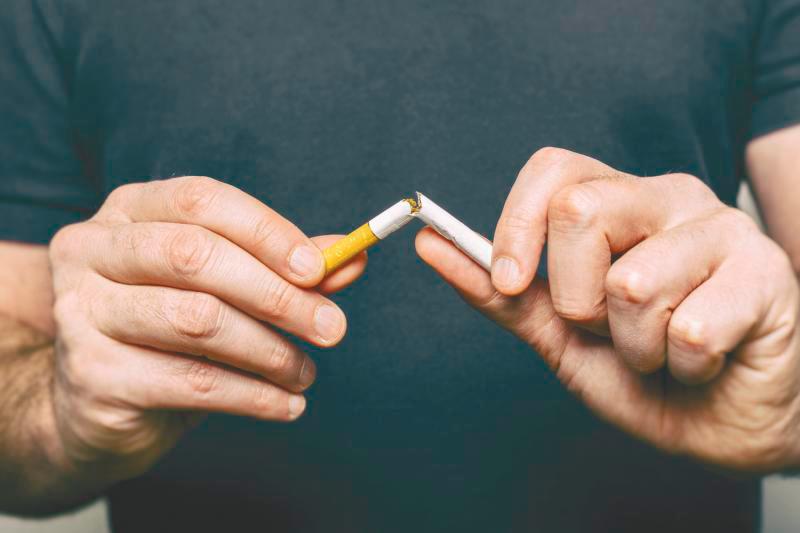IS quitting smoking your New Year’s resolution? Or do you intend to do so in the future? Whether you have been smoke-free for a few days or are still mentally preparing to stop, you are already on the right track. However, the path ahead will totally be paved with urges and temptations.
Quitting smoking is challenging, especially for those who have been nicotine-dependent for many years. Numerous medical conditions are associated with cigarette smoking, including an increased risk of lung disease, diabetes, stroke, cancer, and heart problems.
Even though they are aware of how destructive smoking is to their health, many smokers struggle to kick the habit or maintain their resolve after making a commitment.

To quit smoking, you must not only change your behavior and deal with nicotine withdrawal symptoms, but you must also find alternative strategies to regulate your emotions.
With a proper strategy, it is possible to overcome nicotine addiction and kick the habit for good. Here are five approaches to help you along the way:
Objectives and goals
First, find your reason to quit. To convince yourself to stop, you need a strong, compelling personal reason. It could be to protect your loved ones from breathing secondhand smoke, to lower your chance of getting lung cancer, cardiovascular disease – or other diseases – or to look and feel younger.
If you are an active person, you could also use the need to maintain your stamina and fitness level as a convincing reason.
Avoid triggers
The strongest tobacco cravings are likely to occur in places where you smoked frequently, such as gatherings or hanging out with friends at a coffee shop, or even when you are stressed. Identify your triggers and create a plan to avoid them or get through them without smoking.
Often, you may link specific activities or habits with smoking. Find an alternative activity to smoking after meals, such as brushing your teeth, taking a walk, playing games, or chewing gum.
Also, a reminder not to get too close to groups of smokers, as the scent of their smoke could also be a trigger. Don’t set yourself up for a smoking relapse.
Go cold turkey
You may have heard that more people find it easier to quit cold turkey. Indeed, many smokers quit immediately, without the use of medication or nicotine replacement therapy.
Quitting smoking abruptly poses no threat to your life or health. Nonetheless, unpleasant and occasionally severe withdrawal symptoms can have a major impact on your mental and physical health during the recovery process. Only dedicated individuals have successfully quit smoking for good with this kind of method.

Gradual withdrawal
Another method is gradual withdrawal, which involves reducing the number of cigarettes smoked daily. This reduces the amount of nicotine in your body progressively. You may stop smoking with your morning coffee, or you could opt to smoke only at particular times of the day. It makes sense to limit your smoking prior to your stop date in order to alleviate withdrawal symptoms.
Either you can gradually reduce your cigarette consumption before your stop date, or you can continue smoking as usual until you quit. Both are perfectly fine, although it appears that rapid cessation, or “cold turkey”, may be the superior method. However, as long as you are in the process of quitting and putting in the effort, any approach is acceptable.
Consider Nicotine Replacement Therapy
Many people who are addicted to nicotine experience unpleasant withdrawal symptoms when they try to quit. Nicotine replacement products can help alleviate some of the physical symptoms, such as patches, sprays, chewing gum and lozenges.
When you stop smoking, nicotine withdrawal may give you headaches, affect your mood, or sap your energy. The craving for “just one drag” is tough. Nicotine replacement therapy can curb these urges. Studies show that nicotine gum, lozenges, and patches improve your chances of success when you’re also in a quit-smoking programme.
According to Medical News Today: “Nicotine replacement therapy (NRT) provides a low level of nicotine without the other poisonous chemicals in tobacco smoke.”













